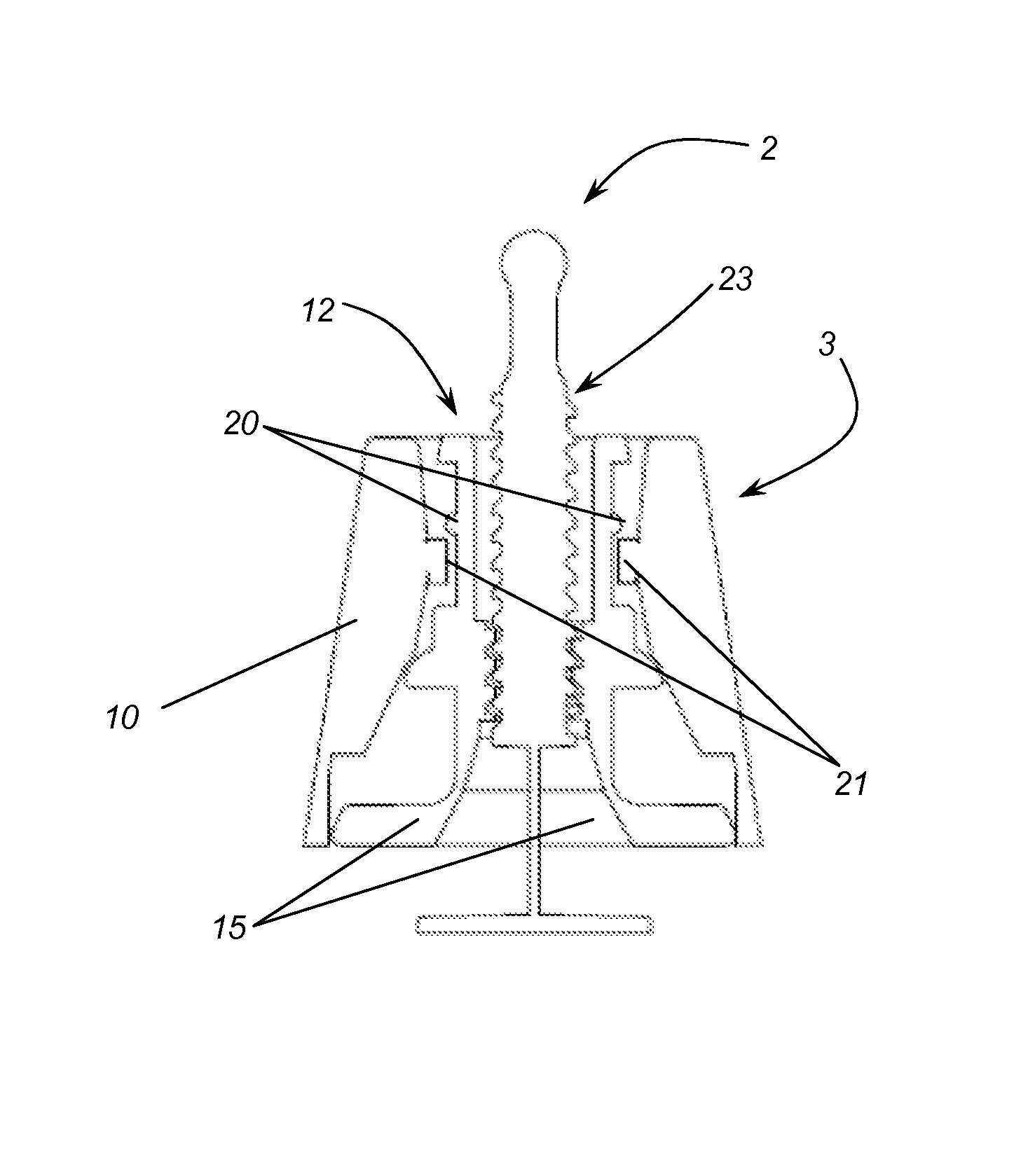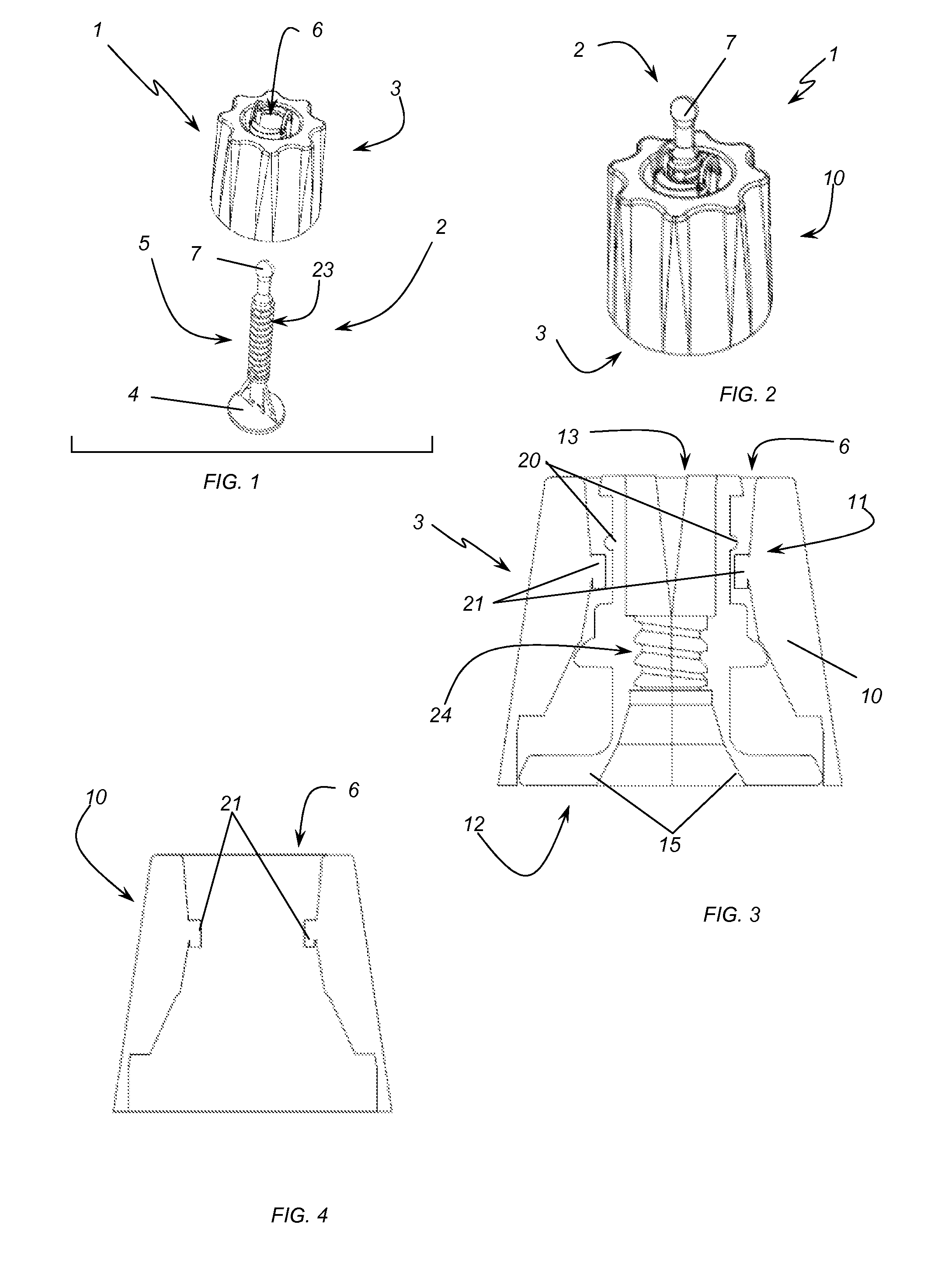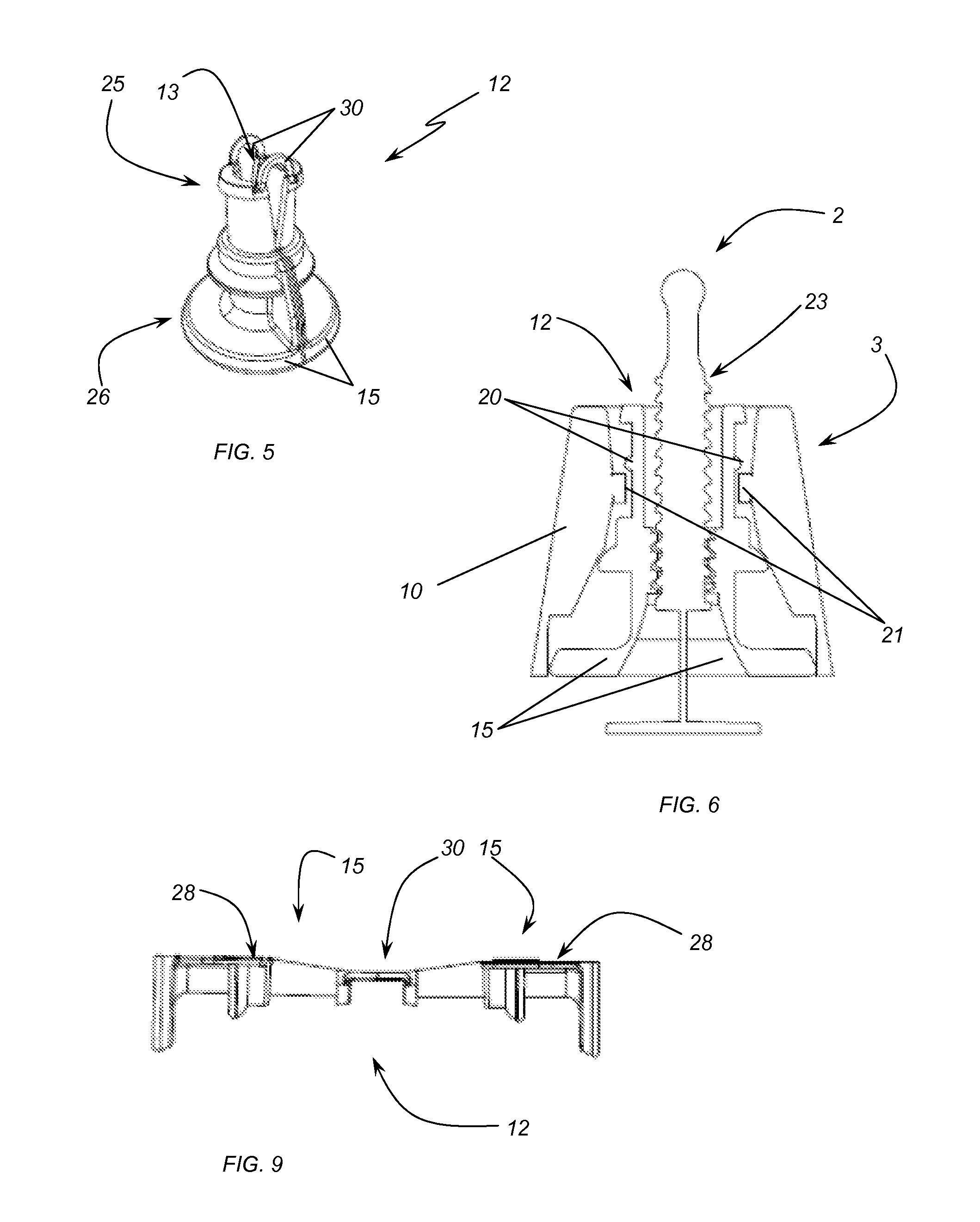Leveling device for laying tiles or the like
a leveling device and tile technology, applied in the construction industry, can solve the problems of not only hardly ever ensuring optimal, not only operating time-consuming, and requiring great skill, and achieve the effect of substantially coplanar surface and optimizing laying operation
- Summary
- Abstract
- Description
- Claims
- Application Information
AI Technical Summary
Benefits of technology
Problems solved by technology
Method used
Image
Examples
Embodiment Construction
[0035]With reference to the figures, and in particular to FIGS. 1 and 2, an embodiment of a leveling device 1 according to the invention for laying tiles is described herein.
[0036]The device 1 comprises, like similar known devices, a tie-rod 2 and a knob 3.
[0037]In particular, the tie-rod 2 comprises a support base 4 to be disposed over an adhesive and to receive and support the edge portions of the tiles. It also comprises a projecting element 5 from the base 4 susceptible to be arranged into the junctions between adjacent tiles that rest on the base 4.
[0038]With regard to the knob 3, it can be coupled to the projecting element 5 and it has a pass-through hole 6 for the output of the free end 7 of the projecting element 5. As it is known, the knob 3 forces at least one portion of the edge of adjacent tiles against the base 4 to level the tiles being laid.
[0039]According to an aspect of the invention, the knob 3 comprises, as it can be observed in the details of FIGS. 3 and 4, a cap...
PUM
 Login to View More
Login to View More Abstract
Description
Claims
Application Information
 Login to View More
Login to View More - R&D
- Intellectual Property
- Life Sciences
- Materials
- Tech Scout
- Unparalleled Data Quality
- Higher Quality Content
- 60% Fewer Hallucinations
Browse by: Latest US Patents, China's latest patents, Technical Efficacy Thesaurus, Application Domain, Technology Topic, Popular Technical Reports.
© 2025 PatSnap. All rights reserved.Legal|Privacy policy|Modern Slavery Act Transparency Statement|Sitemap|About US| Contact US: help@patsnap.com



